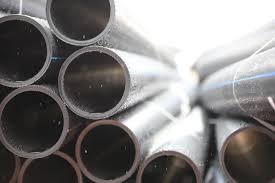Oct . 13, 2024 00:13 Back to list
ppr pipe for hot water supply product
The Advantages of PPR Pipes for Hot Water Supply
In recent years, the plumbing industry has seen significant advancements in materials designed for fluid transportation. One of the standout innovations is the PPR (Polypropylene Random Copolymer) pipe, known for its robustness and versatility, especially in hot water supply applications. This article will delve into the benefits of using PPR pipes for hot water systems, highlighting why they have become a preferred choice among plumbers and construction professionals.
Key Characteristics of PPR Pipes
PPR pipes are made from a thermoplastic polymer known for its excellent chemical resistance and thermal stability. They can withstand high temperatures and pressures, making them ideal for hot water supply systems. Typically, PPR pipes can endure temperatures up to 95°C (203°F) and pressures of approximately 25 bar. This impressive capability ensures that they remain reliable over time, reducing the need for frequent replacements or repairs.
Thermal Insulation Efficiency
One of the significant advantages of PPR pipes is their thermal insulation properties. Unlike traditional metal pipes, which can lose heat during hot water transportation, PPR pipes maintain the temperature of the water, ensuring an efficient supply. This efficiency not only enhances user comfort but also leads to energy savings, as less energy is required to keep the water heated. Consequently, users benefit from a more efficient system and lower energy bills.
Corrosion Resistance
ppr pipe for hot water supply product

Corrosion is a significant concern in plumbing systems, particularly for those carrying hot water. Metal pipes are susceptible to rust and deterioration, which can lead to leaks and contamination of the water supply. In contrast, PPR pipes exhibit exceptional resistance to corrosion, ensuring that they maintain their structural integrity and hygienic standards over time. This non-corrosive nature also means that there are fewer health risks associated with using PPR pipes, as they do not leach harmful substances into the water.
Ease of Installation
PPR pipes are notable for their lightweight nature, making them easy to handle and install. Their installation process is straightforward, often requiring fewer tools compared to metal pipes. PPR pipes can be connected through a heat fusion technique, which creates a seamless joint that enhances the overall durability of the system. This efficiency not only reduces labor costs but also shortens the installation time, allowing projects to be completed more quickly.
Environmental Sustainability
With a growing emphasis on sustainable practices, PPR pipes stand out as an environmentally friendly option. They are 100% recyclable, minimizing waste and promoting responsible resource management. Additionally, PPR pipes do not generate harmful emissions during production or disposal, making them a greener alternative to traditional plumbing materials.
Conclusion
In summary, PPR pipes offer a multitude of advantages for hot water supply systems. Their high thermal resistance, corrosion resistance, ease of installation, and environmental sustainability make them an exceptional choice for modern plumbing applications. As the construction and plumbing industries continue to evolve, PPR pipes are likely to play an increasingly vital role in providing efficient, durable, and safe hot water solutions. Whether it’s for residential buildings, commercial establishments, or industrial applications, PPR pipes are poised to remain a preferred choice among professionals seeking reliability and performance in hot water supply systems.
-
High-Quality PVC Borehole Pipes Durable & Versatile Pipe Solutions
NewsJul.08,2025
-
High-Quality PVC Perforated Pipes for Efficient Drainage Leading Manufacturers & Factories
NewsJul.08,2025
-
High-Quality PVC Borehole Pipes Durable Pipe Solutions by Leading Manufacturer
NewsJul.08,2025
-
High-Quality PVC Borehole Pipes Reliable PVC Pipe Manufacturer Solutions
NewsJul.07,2025
-
High-Quality UPVC Drain Pipes Durable HDPE & Drain Pipe Solutions
NewsJul.07,2025
-
High-Quality Conduit Pipes & HDPE Conduit Fittings Manufacturer Reliable Factory Supply
NewsJul.06,2025

